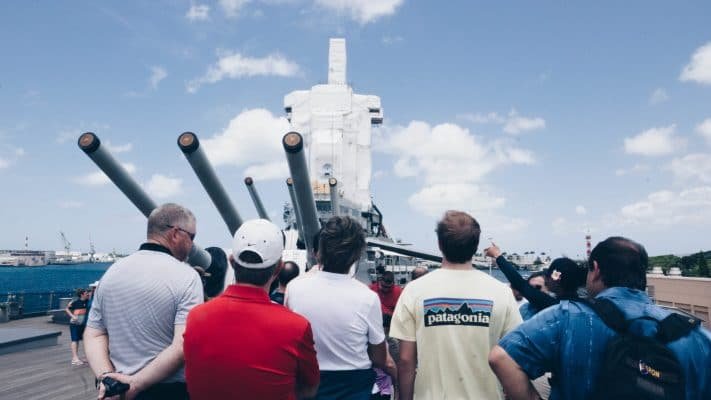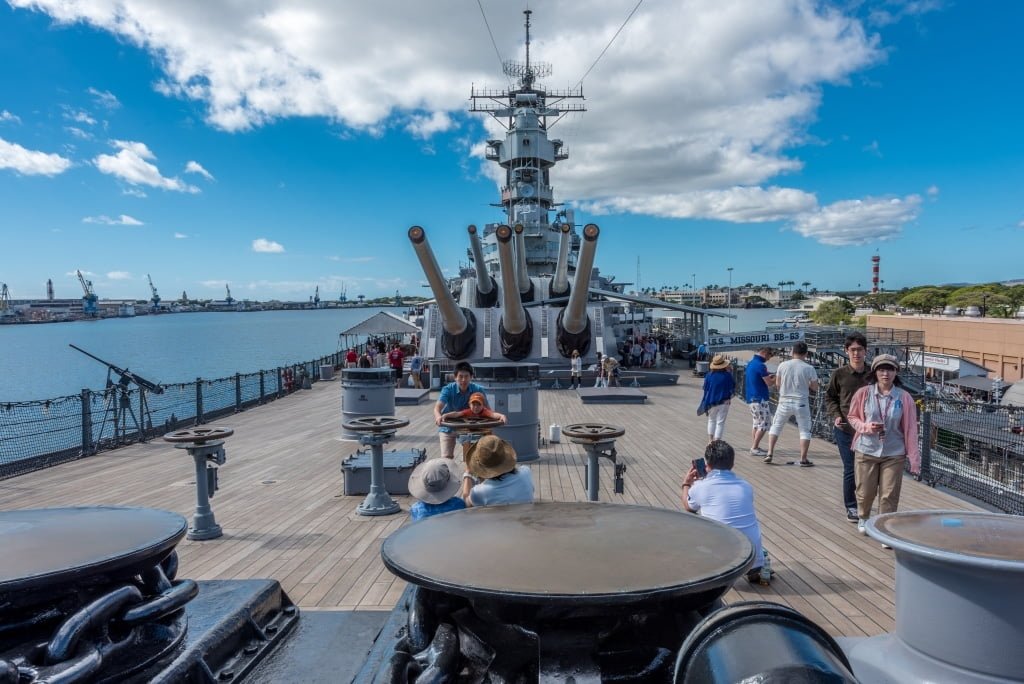The Surprise Attack on Pearl Harbor
Japanese Forces traveled to the U.S. naval base of Pearl Harbor on December 7, 1941 to launch a surprise attack. U.S. battleships were positioned there and they became the targets for the Japanese fleet. Airstrikes hit all the eight battleships and much more.
The Role of Battleships Before Pearl Harbor
These battleships had a pivotal part in the major naval battles such as the Battle of Jutland in World War I. They were deemed as the key warships before the onset of World War II.
Strategic Movements Preceding the Attack
As tensions with Japanese mounted in 1941, the U.S. made the choice to maneuver its Pacific Fleet towards the naval base of Pearl Harbor. The United States thought that the battleships might provide a deterrent in the Pacific towards the Japanese since they were one of the primary ships in the fleet.
Japanese Strategy and Pearl Harbor
Japanese realized that many of the battleships and aircraft carriers were so close that one surprise air strike could have a significant impact. The consolidation of the battleships at Pearl Harbor and the aircraft carriers actually encouraged the Japanese.
Iconic Pearl Harbor Battleships Under Attack
USS Missouri
The USS Missouri battleship symbolically guards the Arizona Memorial. The Battleship Missouri fought and survived World War II, and the deck of Missouri became the historic site of the official surrender of Japan in 1945.
USS Arizona
Arizona is the most famous one out of all the Pearl Harbor battleships. The ship was hit by several bombs at Pearl Harbor and sank shortly after, with thousands of soldiers killed during the attack.
USS Oklahoma
Oklahoma was bombarded by Japanese torpedoes at Pearl Harbor. It was re-floated back to service in 1943 but became obsolete by 1944 and was then decommissioned.
USS California
In 1940, the USS California was deployed by The U.S. Navy at Pearl Harbor. Torpedo bombers hit the USS California, causing it to gradually sink to the bottom of the harbor. However, it was salvaged and repaired by the U.S. Navy and rejoined the fight by 1944.

USS Maryland
USS Maryland was also under attack on December 7, 1941. The Maryland was repaired and used in the Pacific War for any more Allied operations in 1943.
USS Nevada
The crew of the battleship beached the ship after taking heavy fire when the Japanese aircraft bombarded the USS Nevada. However, the battleship was repaired and used to combat following an airstrike when in 1943 Nevada was ready for the Attu landings.
USS West Virginia
This battleship sank fairly rapidly and had extensive damage which required extensive repairs to revive. It was ready to make the Fight of Leyte Gulf by 1944.
USS Tennessee
During the Japanese airstrike, the USS Tennessee tried to defend other battleships and soldiers present there but Tennessee was struck by two armor-piercing bombs that destroyed it and it became non-operational. However, the USS Tennessee was again repaired and was ready in combat by 1943.
USS Pennsylvania
It was dry-docked from the harbor itself and few Japanese bombs hit it yet it was repaired for many months and was combat ready finally.
Aftermath and Recovery
Four of the U.S. battleships sank during the attack that lasted less than two hours, marking a significant loss. However, the preservation of Pearl Harbor’s aircraft carriers and the eventual repair and return of several battleships to combat service by 1943 played a crucial role in the Pacific War, limiting the long-term impact of the Pearl Harbor raid.

